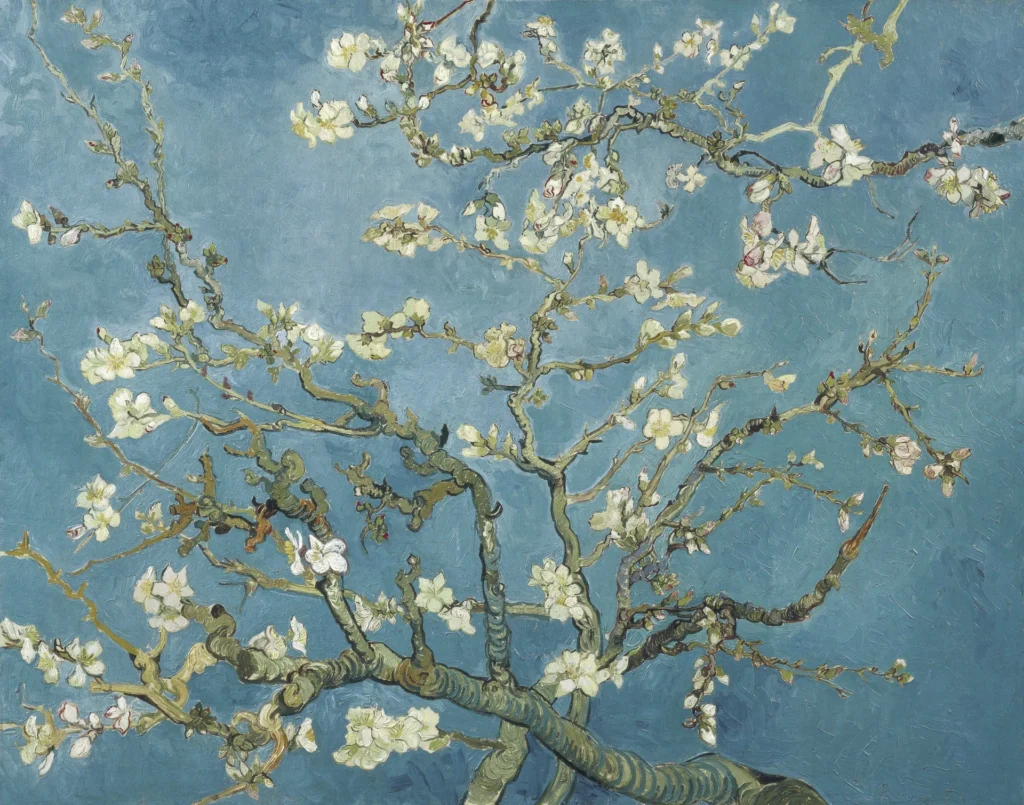Almond Blossoms
Almond Blossoms is a breathtaking and delicate portrayal of blooming almond branches set against a sky-blue background. The artwork’s light, airy strokes and vibrant colors reflect Van Gogh’s admiration for Japanese woodblock prints and symbolize hope, renewal, and love. Created as a gift for his newborn nephew, this painting embodies Van Gogh’s softer, more joyful side, capturing the beauty and fragility of new beginnings.
1890
About the Artwork
In February 1890, Van Gogh painted Almond Blossoms in Saint-Rémy as a tribute to the birth of his nephew, Vincent Willem. The almond tree, one of the first to bloom in early spring, was the perfect symbol for a new life and a fresh start. Van Gogh was overjoyed by his brother’s happiness, and this painting reflects that rare moment of peace and joy in his life.
Did You Know
Did you know that Almond Blossoms was actually a gift? Van Gogh painted it to celebrate his nephew’s birth, creating a symbol of family love that has become one of his most cherished works.
The influence of Japanese art is evident in this piece. Van Gogh admired Japanese woodcuts, and Almond Blossoms reflects this inspiration with its simple forms and bold outlines.
Here’s an interesting detail – his nephew, Vincent Willem, eventually became a major advocate for Van Gogh’s art, playing a key role in establishing the Van Gogh Museum in Amsterdam. Talk about a lasting legacy!










